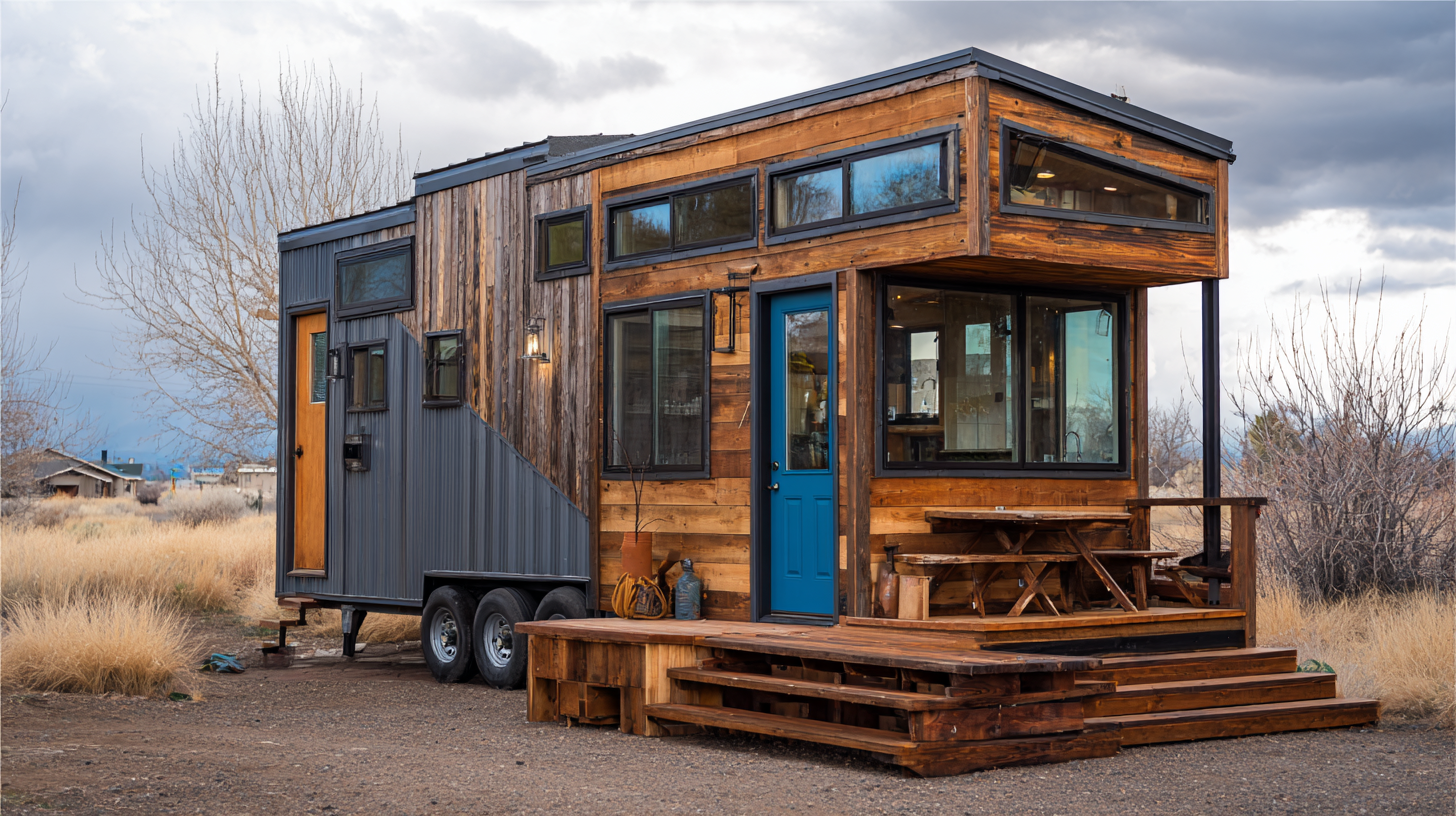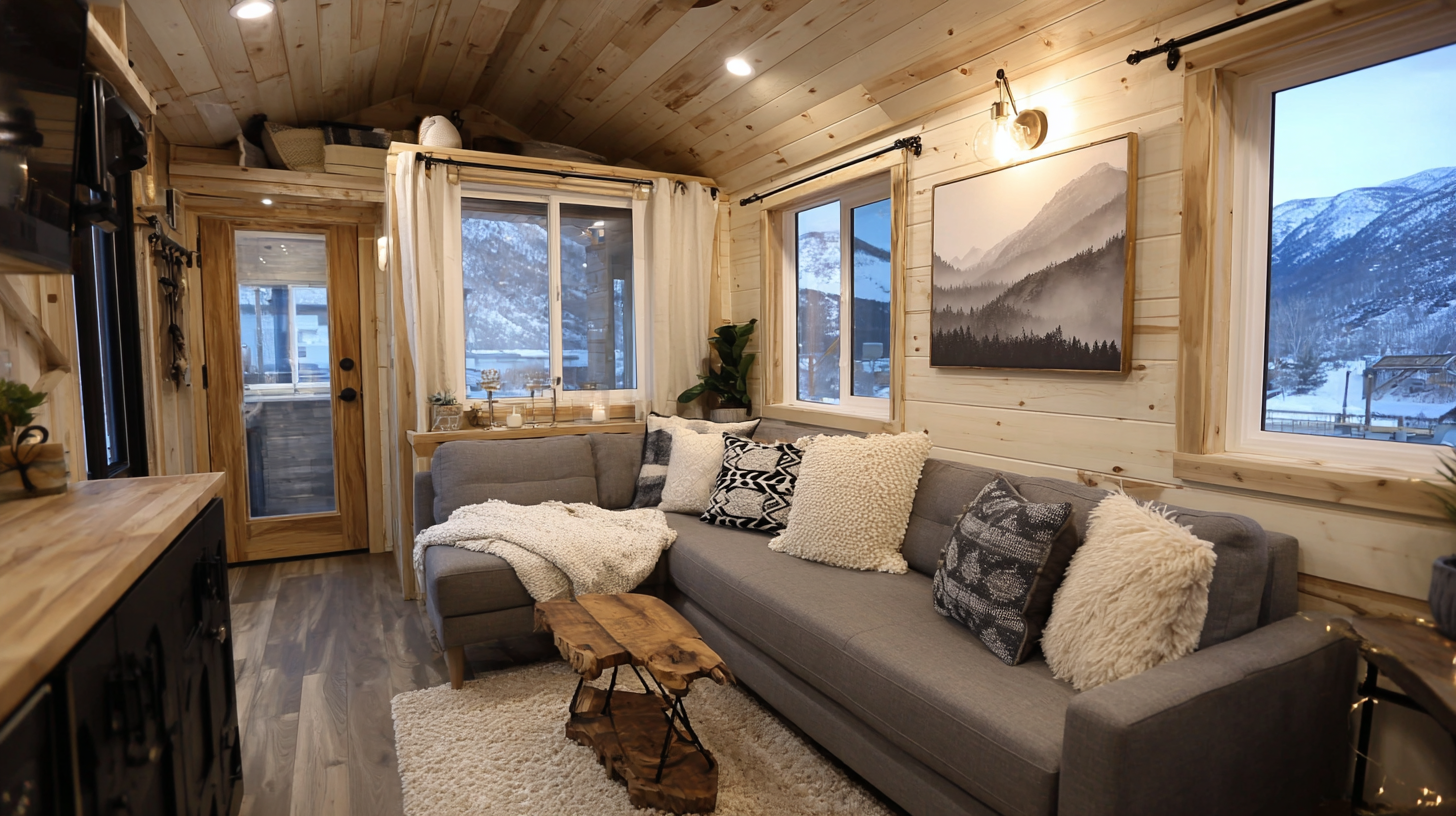Exploring the Tiny House Movement: How 70% of Millennials Are Embracing Minimalist Living
In recent years, the tiny house movement has gained significant traction, especially among millennials, with approximately 70% of this demographic showing a preference for minimalist living. This shift towards smaller, more sustainable homes is driven by various factors, including rising housing costs, environmental concerns, and a desire for a simpler lifestyle.

According to a survey by the American Institute of Architects, nearly 50% of millennials express interest in owning a tiny house, with many citing affordability and reduced maintenance as key motivations. Furthermore, the National Association of Home Builders indicates that tiny homes, defined as any dwelling under 400 square feet, offer a unique solution for urban dwellers facing restrictive real estate markets.
As the tiny house movement continues to grow, it not only reflects changing housing trends but also embodies a broader cultural shift towards sustainability and intentional living in our increasingly complex world.
The Rise of the Tiny House Movement Among Millennials
The rise of the tiny house movement among millennials is not just a trend; it's a lifestyle choice that reflects a significant shift in values and priorities. Many young adults are increasingly leaning towards minimalist living as a response to the overwhelming pressures of modern society, including skyrocketing housing prices and consumerism. With 70% of millennials expressing interest in downsized living spaces, these individuals are seeking alternatives that promote sustainability, financial freedom, and a simpler existence. Tiny homes offer a practical solution, with their compact designs encouraging efficient use of space and resources.
Moreover, the tiny house movement aligns with millennials' desire for experiences over possessions. Many are choosing to invest in travel and personal growth rather than the traditional markers of success like owning a large home. This shift has led to a burgeoning community of tiny house advocates who prioritize eco-friendly living and intentional choices. By embracing a lifestyle that values quality over quantity, millennials are redefining what it means to live well, embodying a refreshing approach to housing that prioritizes personal fulfillment and environmental responsibility.
Understanding Minimalism: A Fresh Perspective for Young Adults
 The minimalist lifestyle is gaining traction among millennials, with 70% of them embracing this philosophy as they seek to simplify their lives. This movement is not just about living in smaller spaces or owning fewer possessions; it represents a fresh perspective on what it means to live well.
The minimalist lifestyle is gaining traction among millennials, with 70% of them embracing this philosophy as they seek to simplify their lives. This movement is not just about living in smaller spaces or owning fewer possessions; it represents a fresh perspective on what it means to live well.
Young adults today are increasingly recognizing the value of experiences over material goods, finding joy in freedom from clutter and consumerism.
Influenced by advocates like The Minimalists, many millennials are redefining success and happiness through a lens of minimalism. This shift allows them to focus on personal growth, relationships, and mental well-being, rather than getting caught up in the relentless pursuit of more.
By letting go of excess, they are finding clarity and purpose, creating a lifestyle that aligns with their core values and priorities. The movement encourages a deeper connection with oneself and the world, fostering a culture of intentional living that resonates strongly with today's younger generation.
Advantages of Tiny Living: Financial Freedom and Environmental Impact
The tiny house movement has gained significant traction among millennials, with approximately 70% of this demographic showing interest in minimalist living. This trend is driven by several key advantages, notably the financial freedom and environmental impact associated with downsizing. According to a report from the Tiny House Society, the average cost of a tiny home ranges from $30,000 to $60,000, which is drastically lower than the median price of traditional homes, averaging over $300,000. This affordability allows millennials to avoid crippling debt and enables them to allocate their resources toward experiences rather than possessions.
In addition to financial benefits, tiny living contributes positively to the environment. A study by the National Association of Home Builders indicates that tiny houses use up to 45% less energy compared to conventional homes. This reduction in energy consumption not only lowers utility bills but also decreases the overall carbon footprint of homeowners. Furthermore, tiny houses often encourage sustainable practices, such as composting and rainwater harvesting. As millennials increasingly prioritize eco-friendly lifestyles, the tiny house movement aligns perfectly with their values, making minimalist living an attractive solution for a generation seeking both financial stability and environmental responsibility.
Exploring the Tiny House Movement: Embracing Minimalist Living
Designing for Efficiency: Space-Saving Innovations in Tiny Homes
The tiny house movement has captured the imagination of many, especially among millennials seeking a more sustainable and simplified lifestyle. Central to this movement is the emphasis on space-saving innovations that allow for maximum utility in minimal square footage. According to a report by the American Institute of Architects, 70% of millennials express a strong interest in living in smaller spaces, highlighting a shift toward more efficient living.
Innovative design solutions play a crucial role in tiny homes. Multi-functional furniture is at the forefront of this trend, with pieces that serve multiple purposes, such as sofa beds and foldable dining tables. A study by the National Association of Home Builders indicates that 56% of tiny home owners prioritize these space-saving designs to optimize their living environments. Furthermore, features like built-in storage, lofted sleeping areas, and modular layouts not only enhance functionality but also cater to a minimalist aesthetic that resonates with today’s homeowners.
Moreover, the technological integration in tiny homes fosters efficiency. Smart home devices allow for automation that saves both space and energy, yielding cost-effective living. As reported by Statista, over 30% of tiny home builders utilize smart technology to manage their limited space effectively, demonstrating how innovation and minimalism are harmoniously intertwined in this growing movement.
Challenges and Misconceptions About Embracing a Minimalist Lifestyle
 The minimalist lifestyle, particularly prevalent among millennials, is often romanticized, yet it comes with its own set of challenges and misconceptions. Many believe that living minimally means sacrificing comfort and style, but this isn’t necessarily true. In fact, embracing minimalism can lead to a more fulfilling life by prioritizing what truly matters. However, it requires a mindset shift and a willingness to face emotional hurdles, such as the fear of letting go of possessions or the pressure to keep up with societal expectations.
The minimalist lifestyle, particularly prevalent among millennials, is often romanticized, yet it comes with its own set of challenges and misconceptions. Many believe that living minimally means sacrificing comfort and style, but this isn’t necessarily true. In fact, embracing minimalism can lead to a more fulfilling life by prioritizing what truly matters. However, it requires a mindset shift and a willingness to face emotional hurdles, such as the fear of letting go of possessions or the pressure to keep up with societal expectations.
Tip: Start small by decluttering one area of your home. This can make the task feel less overwhelming and help you develop a sense of accomplishment.
Additionally, there’s a misconception that minimalist living is purely about owning less. While it's an important aspect, minimalism also involves simplifying life choices, focusing on quality over quantity, and fostering deeper relationships. Many challenges stem from external pressures, as society often measures success by material wealth.
Tip: Create a vision board that reflects your values and aspirations beyond material possessions. This visual reminder can help you stay focused on what really matters to you.
By addressing these challenges with informed strategies, embracing minimalism can transform into a rewarding journey rather than a daunting experience.

